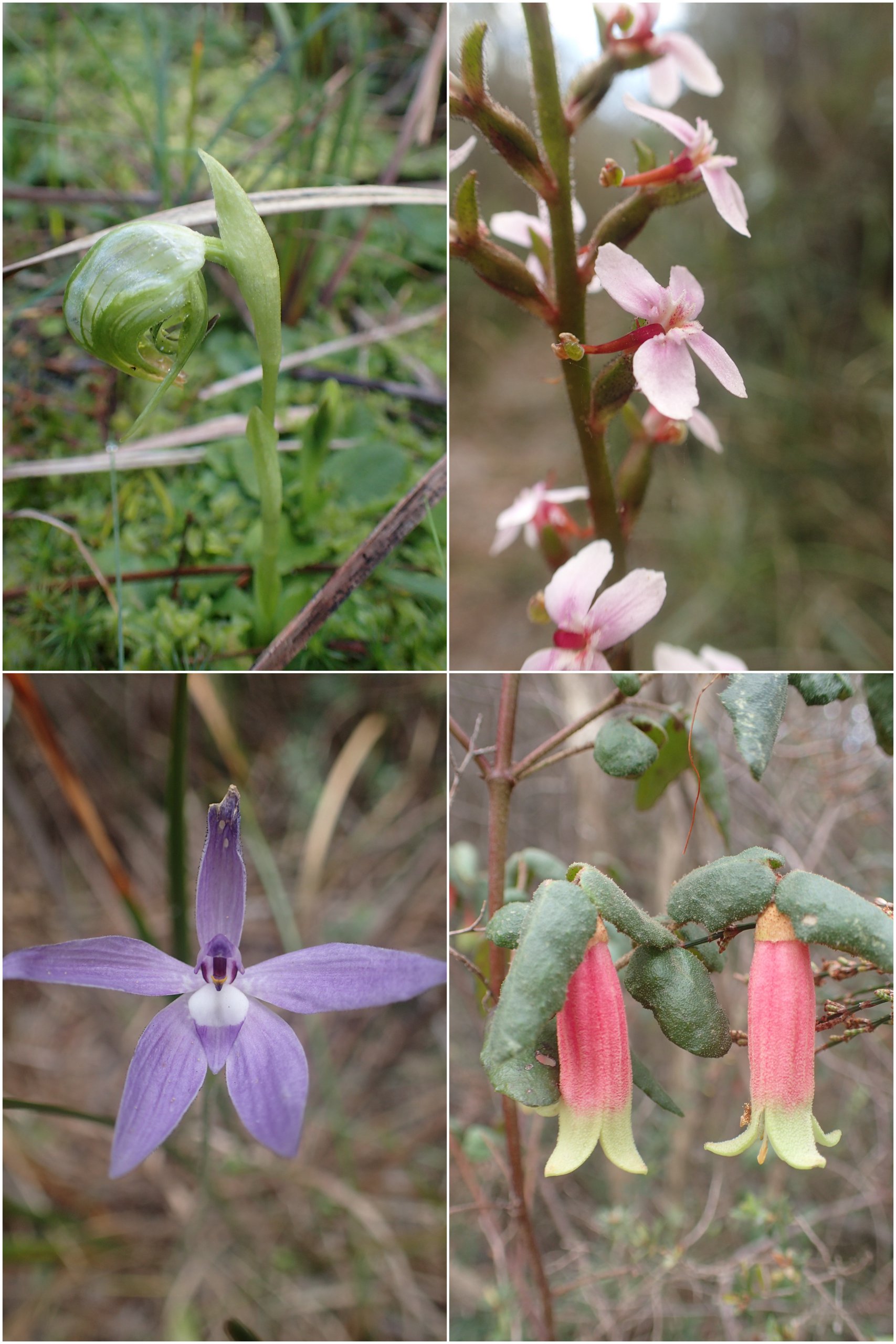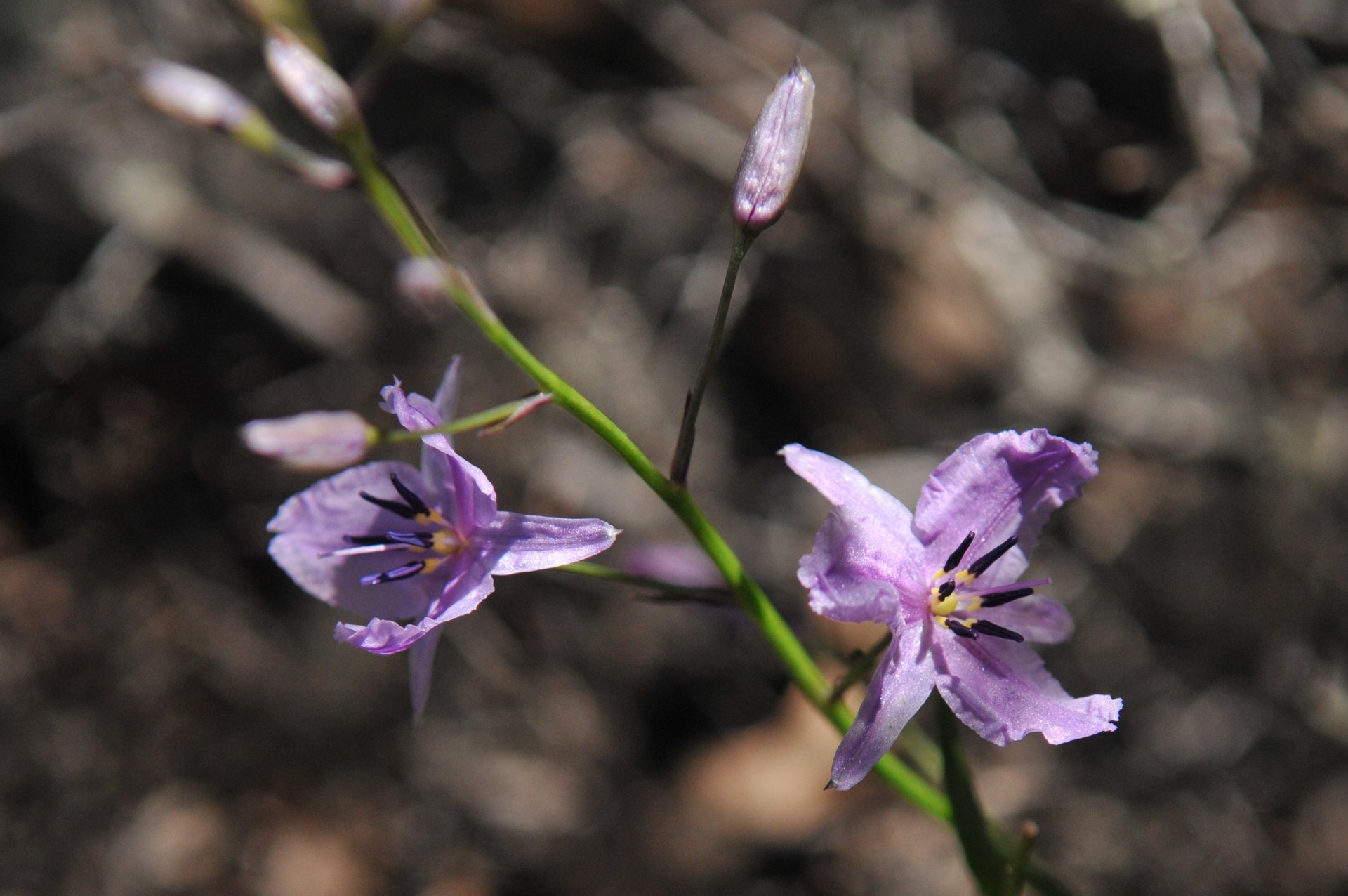It’s a typical winter’s morning in Melbourne: raining, windy and ten degrees. But despite the weather, a group of dedicated volunteers has donned their beanies, gathered at a small heathland reserve in Sandringham and is busy digging holes in the damp, sandy soil. I’m joining these volunteers for the monthly working bee of the Friends of Bay Road Heathland Sanctuary. Today, I’m told, is all about planting and weeding.
The group’s convenor is Michael Norris, who was first drawn to the group because of his passion for birds. He has been the convenor since the mid-1990s. He’s kindly offered to show me around the Bay Road Heathland Sanctuary. Michael has a wealth of knowledge about the history of the reserve, but he is not afraid to interrupt the conversation to pause and peer through his binoculars into the trees.
‘I think it’s an Eastern Spinebill,’ he says excitedly. We stop often – there’s plenty of bird life to see in the reserve. As we wander around, Michael also points out interesting plants, including a huge colony of Nodding Greenhood orchids (Pterostylis nutans) and a magnificent Creeping Mistletoe (Muellerina eucalyptoides).

The vegetation of the reserve is like a patchwork. Some areas are dense with tall thickets and other areas open out to low-growing shrubs. The shrubs intermingle with a rich diversity of herbs, lilies, rushes and grasses.
‘These are patches of burns of different ages,’ Michael explains as we traverse the vegetation patchwork. Controlled ecological burning is an important management tool to maintain species diversity. Without fire, species such as Coast Tea-tree (Leptospermum laevigatum) and Coast Wattle (Acacia longifolia subsp. sophorae), indigenous to the nearby foreshore vegetation, become dominant and ‘ecologically out-of-balance’, outcompeting everything else. One area, burned just a few months ago, has already been reclaimed by masses of Chocolate Lilies (Arthropodium strictum), ready to burst into a sea of purple flowers.
The reserve is one of several that protect the last remaining pockets of heathland and woodland vegetation in the area. They are remnants of the once-famous ‘Sandringham Flora’, which captured the attention of Melbourne’s early naturalists. Native orchids were a particular favourite:
‘Not the least charm about the Sandringham flora lies in the profusion of orchids contained in it, and probably no other locality in the State presents such a variety and abundance of species.’*

Members of the Victorian Field Naturalists Club went to great lengths to visit the area in the late 1800s and early 1900s. In August 1890, C. French described how he and his son travelled by train to Oakleigh and then ‘tramped about fifteen mile’ to Cheltenham and Sandringham to explore the ‘heath-grounds’.**
Along the way the pair described an astounding diversity of plants, birds and insects. The experience of their journey is hard to imagine: today the same walk would pass along busy arterial roads, monotonous suburbia and stark industrial areas. But back in 1890, the same route was covered with wildflowers. There was ‘Epacris impressa, with its charming variety of colours, varying from the purest white to crimson…’; at Cheltenham you could see ‘the lovely little Euphrasia brownii, Hovea heterophylla, the trailing Kennedya [Kennedia prostrata], with its bright red blooms…’; and near Sandringham you could find ‘quantities of the Sweet-scented Acacia (Acacia suaveolens)… in full bloom…’ C. French concluded that ‘the number of orchids seen in flower was 12 – not so bad for the month of August.’
As the area became increasingly developed, concerns were raised about the loss of the Sandringham flora. Today, the handful of remaining reserves exist because of the local people who have lobbied tirelessly for their preservation. At Bay Road, for example, the City of Sandringham had planned to develop the land, but received 96 letters of objection due to the site’s botanical significance. The reserve was set aside in 1976.
But these tiny reserved fragments in a sea of suburbia present challenges. Jo Hurse has worked in the reserves since 1999 and knows firsthand the difficulty of the work involved. Jo has offered to show me around two other local reserves in Beaumaris: Long Hollow Heathland Sanctuary and Balcombe Park Reserve.
‘Eighty percent of what we do is managing weeds,’ she says, which includes the Coast Tea-tree and Coast Wattle. Jo and her team also carry out the burns, which take months of planning and preparation. Before a burn, the area must be cleared of Coast Tea-tree and Coast Wattle – all by hand.

Jo shows me one recently burned patch in Balcombe Park Reserve where ‘… it took seven weeks with three staff working five days a week to remove the Coast Tea-tree.’ But the hard work has paid off: the patch is species-rich and clear of weeds.
On my tour with Jo we are also accompanied by Pauline Reynolds, convenor of another local heathland Friends group at George Street Reserve. Pauline is passionate and hugely knowledgeable about the reserves and their ecology and has many stories to tell from her decades of experience. My favourite story of Pauline’s perfectly illustrates the enthusiasm and passion of the Friends group members. At Long Hollow, Pauline shows me a small mistletoe plant growing on a wattle. ‘It was hand-planted on to the tree,’ Pauline explains. The sticky fruit was in fact originally collected from the very same Creeping Mistletoe plant that Michael had shown me at Bay Road Heathland Sanctuary.
Like Melbourne’s early naturalists, the heathland reserves have clearly captured the attention of many locals, who devote huge amounts of volunteer time. Back at Bay Road, I meet Sue Forster, a regular volunteer here and at the local Bayside Community Nursery.
‘I originally became involved to learn about the locally indigenous plants,’ Sue says. She now advises customers at the nursery on which indigenous plants to buy and helps to guide visitors during the spring open days.

Other volunteers come from further afield, such as Tian Gao, one of a trio of Monash University students from China helping out at the working bee. Tian has travelled from Box Hill and when I meet him he is busy planting Trigger Plants and Chocolate Lilies in the ground.
‘I wanted the opportunity to learn more about the local plants and animals,’ he says. ‘It’s hard to find experiences like this in China.’ Surprisingly, the students aren’t studying ecology or environmental science; they’re studying sociology, business and psychology. I ask what his favourite plant is: ‘Nodding Greenhood,’ he says with a grin.
Every year in spring the seven main reserves have open days which include guided tours to see the incredible displays of wildflowers. If you’ve never been, I highly recommend a visit. Take a camera, but more importantly take your time. Wander through the heathlands and enjoy what is left of the magnificent Sandringham flora.
*C.S. Sutton (1911). Notes on the Sandringham Flora. The Victorian Naturalist 28, 5-20.
**C. French (1890). A Ramble Through the Heath-Ground from Oakleigh to Sandringham. The Victorian Naturalist 7, 71-75.
Banner image of a Chocolate Lily courtesy of Mikeybear [CC BY-SA 3.0 (https://creativecommons.org/licenses/by-sa/3.0)], from Wikimedia Commons.


Leave a Reply